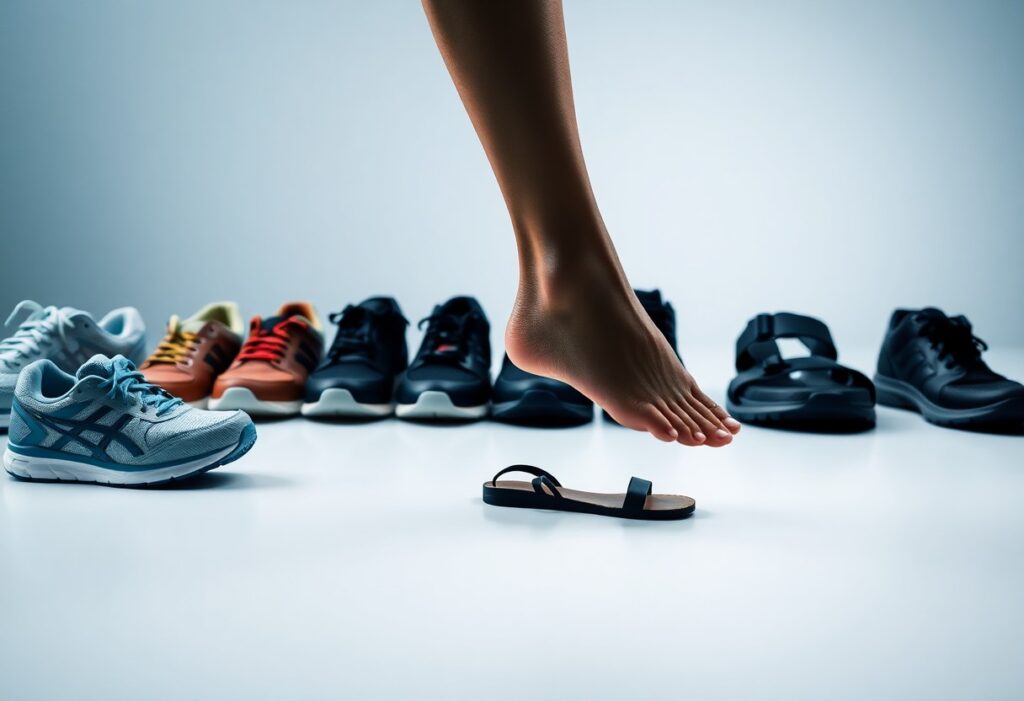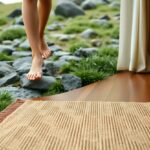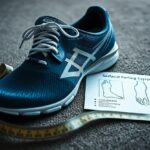
When you take a step, the footwear you select can have a profound impact on your foot health. Many people mistakenly assume that shoes with enhanced cushioning and support are the best options for alleviating foot discomfort. However, traditional shoes can often contribute to more harm than good. Dr. Alissa Kuizinas, a respected podiatrist from Massachusetts, advocates for the use of barefoot shoes or minimalistic shoes, as they promote stronger and healthier feet. By choosing footwear that allows your feet to function naturally, you can reduce the chances of developing foot-related issues and improve your overall foot wellness.
Recognizing the Limitations of Traditional Footwear
While traditional shoes may provide temporary relief for foot pain, they frequently exacerbate existing conditions and introduce new challenges, according to Dr. Alissa Kuizinas. She points out that the $133 billion shoe industry often prioritizes visual appeal and profit margins over genuine foot health, leading to designs that can constrict and weaken your feet over time. This reliance on conventional footwear can create a dependency that ultimately undermines your foot health.
Examining the Shoe Industry’s Misguided Approach to Foot Health
At the heart of this problem is the shoe industry’s flawed perspective on addressing foot health, which typically emphasizes adding excessive cushioning, support, and rigid structures to shoes without addressing the root causes of discomfort. This method can encourage a dependence on footwear that may ultimately deteriorate your foot health in the long run, resulting in various complications that could have been easily avoided.
Spotting the Design Flaws in Conventional Shoe Models
Conventional shoe designs often incorporate narrow toe boxes, rigid soles, and excessive cushioning that can impede natural foot motion, leading to weak and dysfunctional feet. Dr. Kuizinas emphasizes that footwear should serve to protect your feet from external factors, rather than limit their natural movements. A well-crafted shoe should focus on natural foot function and include minimalist features like spacious toe boxes, flexible and flat soles, and minimal cushioning to promote foot health.
By adopting barefoot shoes or minimalistic footwear, you can actively work towards strengthening your feet and improving your overall foot well-being. Dr. Kuizinas supports the philosophy of using as little shoe as possible, allowing your feet to function naturally and move freely, which is essential for maintaining optimal foot mechanics.
The Essential Importance of Natural Foot Mobility
Footwear that restricts your foot’s ability to move freely can result in various foot problems and discomfort. It is crucial to assess how your shoe choices influence your overall foot health and comfort levels.
Evaluating How Footwear Affects Your Foot Mobility
To truly understand the impact of shoes on your foot’s movement, it is vital to analyze the specific design elements and characteristics of your footwear. Conventional shoes typically include cushioning and support features that can actually restrict your foot’s natural motion, leading to weak and dysfunctional feet over time. Such limitations can hinder the development of the strength and flexibility your feet need for optimal function.
Leveraging the Benefits of Natural Foot Movement
The benefits of allowing your feet to move naturally are vast, as strong feet are foundational to overall foot health. By choosing minimalistic shoes or barefoot footwear, you enable your feet to operate as they were intended, fostering strength and resilience.
Movement is crucial for developing strong feet. When your feet are confined by traditional footwear, you risk encountering various foot problems and discomfort. On the other hand, embracing minimalistic shoes or barefoot options can substantially improve your foot health by allowing for natural movement and facilitating strength-building. By making informed footwear choices, you can reduce your risk of developing foot issues and promote your overall foot wellness.
Understanding the Features of Functional Footwear
Gaining a comprehensive understanding of functional footwear is essential, as these shoes prioritize both foot health and natural movement. Functional shoes are specifically engineered to enable your feet to operate as intended, eliminating the need for excessive support or confinement.
Defining Functional Footwear: Characteristics and Benefits
Through research and personal experience with various shoe styles, you’ll find that functional footwear possesses distinct features, such as a wide toe box, flexible and flat soles, along with minimal cushioning and support. These qualities empower your feet to move freely and naturally, promoting stronger and more efficient foot mechanics.
Enhancing Foot Health with Functional Footwear
Wearing functional shoes offers numerous benefits, including improved foot strength, a reduced risk of injury, and enhanced overall foot health. These shoes allow your feet to function as they were designed, paving the way for stronger feet and better balance in your everyday activities.
Functional footwear is designed to support your feet without imposing unnecessary constraints, enabling them to move and flex naturally. This design philosophy encourages optimal foot health while minimizing the chances of developing foot ailments. By opting for functional shoes, including barefoot shoes or minimalistic options, you actively promote healthy foot function and reduce the risk of foot pain and injury. Transitioning to functional footwear may require patience and gradual acclimatization, but the long-term benefits for your foot health are immeasurable.
Discovering the Key Attributes of Functional Footwear
To achieve optimal foot health, it’s essential to look for shoes that incorporate specific features. The key attributes to keep in mind include:
- Wide toe box
- Flat and flexible soles
- Minimal cushioning and support
Being aware of these characteristics will greatly assist you in selecting shoes that encourage healthy foot function and support.
The Significance of Wide Toe Boxes and Flexible Soles
A vital feature of functional shoes is a wide toe box, which allows your toes to spread naturally. This design prevents toe jamming and other discomfort-related issues that may lead to chronic foot pain.
The Importance of Minimal Cushioning and Support
In addition to a wide toe box, functional shoes also need to provide minimal cushioning and support. This design element promotes natural foot movement while strengthening foot muscles, thus lowering the risk of foot issues.
It’s important to emphasize that minimalistic footwear, including barefoot shoes, can greatly enhance your foot health by enabling your feet to function freely. By choosing shoes with minimal cushioning and support, you can strengthen the muscles in your feet and reduce the likelihood of injuries. This approach not only improves your overall foot health but also decreases the chances of experiencing chronic pain. Therefore, you should prioritize footwear that allows your feet to move naturally without excessive cushioning or support.
Transitioning to Functional Footwear: A Step-by-Step Guide
Having recognized the significance of functional footwear, it’s time to begin your transition. Contrary to the common notion that increased cushioning and support equate to better comfort, you should opt for minimalistic shoes or barefoot shoes that enhance your feet’s natural functioning.
Practical Steps for Transitioning to Functional Footwear
Despite any hesitations, start integrating functional shoes into your daily routine using these practical strategies:
- Commence with short walks and gradually increase the distance
- Choose shoes that feature a wide toe box and flat soles
- Opt for minimal cushioning and support
The key is to provide your feet adequate time to adapt to the new shoes while fortifying the muscles in your feet.
The Necessity of Patience and Gradual Adjustment
Transitioning to functional footwear requires patience and a gradual approach. Shoes that are excessively minimalist can cause discomfort and pain if your feet are not used to them. Taking small steps is crucial, allowing your feet to acclimate to the new footwear.
Footwear options such as barefoot shoes or minimalistic shoes can offer tremendous benefits for your foot health, but it is essential to introduce them slowly. Overuse or improper fit can lead to injuries or lingering discomfort. The ultimate aim is to strengthen your foot muscles while enhancing your overall foot health, so take your time and avoid rushing through this process. The benefits will be substantial; expect to experience improved balance, less pain, and stronger feet.
Fostering Strong and Functional Feet Through Smart Choices
Even in a culture that embraces shoes with excessive cushioning and support, you can develop strong and functional feet by making informed footwear selections.
The Relationship Between Foot Strength and Overall Well-Being
Along with other health aspects, foot strength plays a critical role in your overall health, affecting your balance, posture, and mobility.
The Role of Functional Footwear in Building Strong Feet
Functionally designed shoes that feature a wide toe box, flat and flexible soles, and minimal cushioning are crucial for developing strong feet, as they facilitate natural movement.
Wearing functional shoes or barefoot shoes can significantly contribute to building stronger foot muscles and enhancing your overall foot health. By allowing your feet the freedom to move and function as intended, you can significantly reduce the risk of foot problems and optimize your balance and stability. As you transition to minimalistic shoes, anticipate improvements in your walking technique and overall sense of well-being.
By taking control of your foot health, you can select shoes that enhance your feet’s natural functions rather than impede them. Choosing barefoot shoes or minimalistic options that allow your feet to operate naturally will promote strength development over time. In this way, you’ll gain increased stability and comfort during various activities, allowing your feet to become strong and capable. Begin your journey by searching for shoes with a wide toe box, flat and flexible soles, and minimal cushioning and support, and practice patience as you transition to a more natural walking style.
The Article A Podiatrist’s Guide to How Shoes Affect Your Foot Health appeared first on My Shoes Finder
The Article How Shoes Impact Your Foot Health: A Podiatrist’s Insights Was Found On https://limitsofstrategy.com





Comments
One response to “Shoes and Foot Health: Insights from a Podiatrist”
I appreciate your take on footwear and foot health—it’s about time we dig deeper into this often overlooked aspect! You know, it’s funny how many people are willing to invest a small fortune in shoes that promise to be miracle workers for our poor feet while ignoring that our ancestors probably had way less toe trouble running around in nothing but nature’s finest—bare feet!